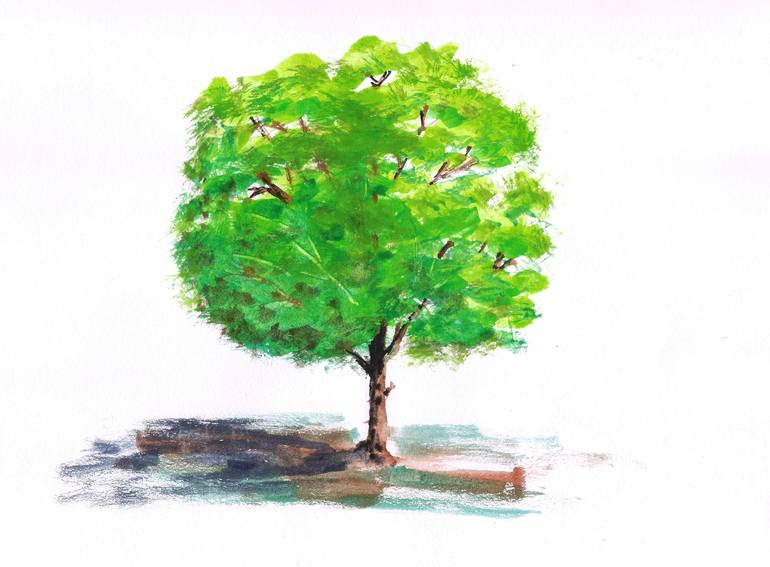 (Illustration: ‘Single Green Tree,’ dry watercolor, by Alexander Portnyagin, and found here).
(Illustration: ‘Single Green Tree,’ dry watercolor, by Alexander Portnyagin, and found here).
Since I’ve covered weather and climate change a lot this week, today I came across another study that emphasized a small step in the way-right-direction, and seemed to depict how a little can go a long way in making a fight against global warming, and is easily at hand. There’s probably a shitload of ‘little‘ things that could be done if we knew more about the real effects of our quickly-altering environment.
In this particular ‘little’ case, it’s the value of a single tree.
The study was published last week at IOPScience, and from the Abstract:
The ability to examine spatiotemporal relationships between trees and urban climate have been hindered by lack of appropriate air temperature data and, perhaps, by overreliance on a single “tree canopy” class, obscuring the mechanisms by which canopy cools.
…
Patches cooled at all times of day despite uneven allocation throughout the city, whereas more distributed canopy cooled in predawn and evening due to increased shading.
This later finding is important for urban heat island mitigation planning since it is easier to find planting spaces for distributed trees rather than forest patches.
In other words, trees make a big difference, sometimes more, sometimes less, but the winning is with the people.
Details on the study today via ScienceAlert:
Over the course of one hot day and night, the team gathered more than 70,000 air temperature readings in various different settings around the city.
Compared to streets without any trees at all, those that had a smattering of canopies were cooler in the evenings.Even when the sun set completely and the leaves stopped transpiring, the neighborhoods with trees experienced cooler temperatures throughout the night.
“There are plenty of good reasons to plant trees, but our study shows we shouldn’t underestimate the role that individual trees can play in mitigating heat in urban areas,” says environmental scientist Michael Alonzo from American University.
“City planners can take advantage of the small spaces that abound in urban areas to plant individual trees.”Trees are known to cool down city dwellers and city buildings, acting sort of like air conditioners.
…
The study in Washington provides new information on the subject. In the afternoon, the authors found the canopy of a forested park cooled things down by 1.8 °C, which is higher than previous estimates.Single trees had no such effect, but in the evening, those single trees made a difference.
In the study, a single 15-meter-tall tree (49 feet) would cast a shadow a 14-meter shadow in the afternoon. By the evening, that tree’s shadow increased to 56 meters.
Practically, this meant that just a smattering of canopies could cover the same amount of ground as a dense forest by the end of the day.Together, when the shadows of these individual canopies combined to cover 50-percent of an area, researchers measured significantly lower temperatures — up to 1.4 °C lower, to be exact.
Even after sundown, when the canopies of scattered trees only covered about 20-percent of the area, the team noticed a cooling effect.In summertime, urban areas without much greenery can turn into heat islands, and rising temperatures from climate change are going to make it even harder for city dwellers to find relief.
“Evenings are not quite the respite from heat that we once had,” says Alonzo.
“These distributed trees do help the city cool off in the evening and that’s important for human health.”
One small step with a single tree, one giant leap in coolness for mankind … or words to that effect…
 (Illustration out front: Salvador Dalí’s ‘Galatea of the Spheres,’ found here).
(Illustration out front: Salvador Dalí’s ‘Galatea of the Spheres,’ found here).